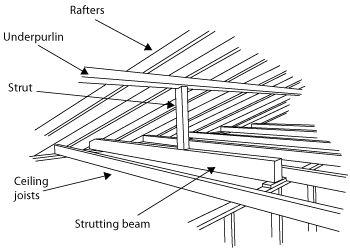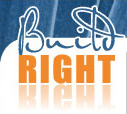Strutting beams

'Strutting' beams are used in many ways and locations in a conventionally framed roof. Their function is always to support roof members, generally below the underpurlins, where there are no conveniently located load-bearing walls. Strutting beams only support roof loads. The strutting beam transfers the roof load directly to load bearing walls. It must never rest on, or transfer load to, a ceiling joist.
Strutting beams cannot double as hanging beams. This is because they are likely to sag and will cause the ceilings to sag. Also, they transfer roof loads that are often dynamic because of wind pressure acting on the roof. This means they may move up and down or from side to side, causing the ceiling to move and possibly crack.
The ends of strutting beams must bear on the full width of wall plates. Blocking should be provided between strutting beams and wall plates to provide an initial clearance of 25 mm at mid-span. This clearance is between the underside of the beams and the tops of ceiling joists, ceiling lining or ceiling battens, as appropriate.
Strutting beams may extend in any direction in the roof space. They bear directly above studs supporting concentrated loads or distributed over two or more studs by means of top plate stiffening. Where strutting beams occur over openings, the lintels have to be designed for a concentrated load.
